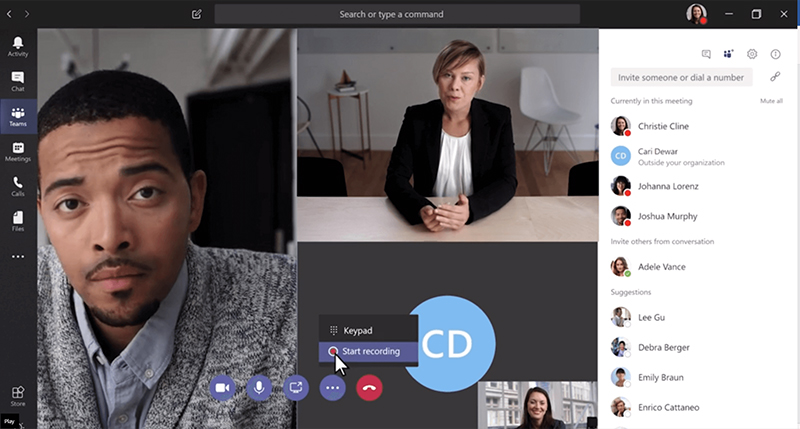
The Coronavirus pandemic has brought disruptive changes in the way we all work and many of these changes are here to stay
The previous 12 months has seen seismic changes in the workplace across the globe. The Coronavirus pandemic has changed the way we all live, work and interact, and many of these changes are here to stay.
The changes brought by the pandemic, including working from home and technology solutions made imperative by the resulting constraints have become an integral part of the way we do business and will shape the workplace of the future.
Recruiters will factor the changes in the workplace when communicating roles and expectations, so that prospective employees understand what is needed from them. Employees will seek more work flexibility and the exposure to more global opportunities.
Here are some of the key trends that will shape our workplace in 2021.
Remote Working is Here to Stay
Working from home has become the standard for many employees, and will continue this year and for many, perhaps permanently. A 2020 IBM survey found that two thirds of remote workers wished to continue working from home, and more than half preferred it. Many employees and company management who have experienced the ability to function successfully remotely and have experienced the advantages remote work brings, don’t wish to go back.

Many organisations are cutting real estate spends and budgets and remote working is a way to maintain a large workforce on a tighter budget. Disruptive technology is leading the way and enabling the changes.
Disruptive Technology
Organizations will adapt and customize the new technology to suit their needs. There is a growing demand for remote technology and products as organizations accept remote working is the new norm. Whilst an office environment may continue, designing a workplace only around a physical space is no longer an option. Digital technologies will continue to disrupt and surge. Technologies like video conferencing with facial recognition, virtual workspaces, online avatars will continue even when some of the workforce returns back to physical workspaces.
Social Media Recruiting
Recruiting using social media platforms is an integral part of the recruitment process, and 85% of companies now say they use social media with success. Not just by advertising a position on LinkedIn, recruiters develop relationships that proactively engage candidates individually.
Virtual Interviews & Psychometric Testing
Recruiters have already adapted standard hiring procedures to online formats. As recruiters need to assess candidates effectively from a distance there is an increase in the use of psychometric tests as a standard recruitment tool.

They are using scientifically backed, data-driven psychometric testing to save time to focus on ideal candidates faster.
Widening the Recruiting Criteria
There is an increasing focus on the soft skills that candidates can bring to the organisation. Whilst communication, problem-solving and collaboration skills have always been important, in a post-pandemic world, they’re essential.
Employees across every sector need a wide range of overlapping skills, for example, new technology savvy, new media literacy, virtual collaboration, responsive and proactive thinking, cross-cultural competency, social intelligence and systems thinking.
New Job and New Experiences
For newly recruited employees the traditional experiences of joining a workplace and learning a whole new set of behavioral and social norms isn’t going to be as relevant. A wholly new digital generation has already changed the way new hires experience technology and the workplace. Now, they’ll help us usher in a whole new way to enter the workplace. The 2021 work culture will be digital and in many cases virtual n nature.
Health & safety
Employers are reviewing lessons learned from the pandemic and will apply them to post-Covid business management. They are finding ways to ensure employees are safe and health and wellness will be apriority. Employees returning to a physical workplace will have high expectations about safety protocols, such as regular deep cleaning of facilities, socially distanced workspaces, daily temperature checks, mandatory mask-wearing, and many on-site hand-cleaning stations. In a report by McKinsey & Company, organisations will need to demonstrate awareness, vulnerability, empathy, and compassion in order to set the stage for business recovery.
Video Conferencing
Video conferencing has become the norm for everyone – socially as well as in business. de facto way we meet. So much so, “to Zoom” has now become a verb.

Video conferencing will continue to be one of the most dominant work trends. Employees and management will have to increase their communication capabilities as effectively over a video as we once did face-to-face.
Upskilling
As organisations struggle with tighter budgets in the economic recovery, upskilling existing employees is increasingly being used to improve the talent pool and evolving skills to meet new challenges. Upskilling will be an important part an organisation’s objectives.
Diversity
Diversity and inclusivity will increase in critical importance in every aspect of the workplace. Employers will focus much more on how to improve a sense of belonging in their organizations. In a survey by the Manifest70% of job seekers say they consider a company’s commitment to diversity when evaluating them as a prospective employer. However, diversity in terms of hiring and promotions is only one part of the equation. Organisations will pay closer attention to work cultures and inclusivity.
A Globally Dispersed and Freelance Workforce
The pandemic has accelerated the trend for a globally dispersed workforce. As remote working has become the norm, more and more organisations are likely to use the entire world as their workplace.
Many companies have already decentralized their offices in favor of remote working. Advancements in technology have given rise to an increase in freelance workers as well as full time. Employees can expect to see co -workers from across the globe hired for a specific task rather than as full time employees. Over the next year, the workforce will continue to disperse, and will become the norm.
